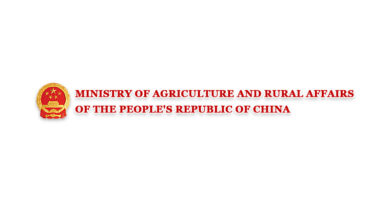Central Highlands – Expand the boundaries, connect to all regions
24 May 2022, VN: The Central Highlands needs to connect to all regions, take farmers as the center, and attract investment businesses to develop sustainable agriculture
On May 21, the Ministry of Agriculture and Rural Development (MARD) coordinated with Gia Lai People’s Committee the forum “Central Highlands Connect: Creating a linkage in agro-product production and consumption value chain.”
Vietnam Agriculture News had had an interview with Deputy Minister of Agriculture and Rural Development Phung Duc Tien in order to identify the advantages, disadvantages and the bottlenecks that need to be removed to promote Central Highlands agriculture.
Deputy Minister of Agriculture and Rural Development Phung Duc Tien shared concerns and solutions for Central Highlands agriculture to develop in depth.
How does Deputy Minister assess the potential and advantages of the Central Highlands in terms of agricultural development? What are the difficulties and challenges that the Central Highlands is facing?
The Central Highlands climate is favorable for the development of fruit trees, industrial plants, forestry trees, and herbs (such as coffee, pepper, avocado, durian, rubber, cassava, and Ngoc Linh ginseng) as well as large-scale cattle breeding, aquaculture, and cold-water fishery.
In addition, the terrestrial and aerial transportation system had been being improved continuously with three airports (one international airport and two domestic airports), creating favorable conditions for consuming agro-products in provinces in Central Coast, Southeast, and Ho Chi Minh City as well as transporting inter-regional to northeastern Cambodia and other countries in the area.
Production and business activities of agro-products in the Central Highlands are thriving in the direction of promoting the potential and advantages of the region and localities in accordance with the market mechanism.
The Central Highlands agroproduction value in the 2016-2020 period reached a growth rate of 6.05%/year. In 2021, despite facing many difficulties and challenges caused by the Covid-19 epidemic, the Central Highlands growth rate still increased by 5.8% and accounted for nearly 12.8% of the country’s agroproduction value
However, advantages aside, Central Highlands agriculture is also facing many difficulties and challenges. Climate change caused a lack of water for irrigation in the dry season; technical infrastructure in service of agroproduction remains lacking, unable to meet the needs of developing commodity production on a large scale; cultivation and harvesting technology is manual and outdated; the quality of plant and animal breeds is not high, plant varieties management is not lacking as there is still a situation of trading poor quality seed sources; there has not been a good connection between producers, processors and consumers, especially in the process of agro-forestry production associated with tourism – service development; product promotion has not been given proper attention and investment.
Can Deputy Minister Phung Duc Tien tell how the Ministry of Agriculture and Rural Development has been making suggestions and directions in coordinating with Central Highlands provinces to overcome the mentioned difficulties to form an agriculture ecosystem based on sustainable production, processing and consumption chain?
The Ministry of Agriculture and Rural Development has closely coordinated and supported Central Highlands provinces to synchronously deploy many solutions: effectively organize the implementation of the Government’s 2021-2030 Sustainable Agriculture and Rural Development Strategy – vision to 2050; quicken the transition from agricultural production thinking to agricultural economic thinking; put the innovation of growth models in keen interest with the driving force being science and technology, innovation and digital transformation; restructure the agriculture sector, improve agro-product added value and competitiveness adaptive to climate change.
The Ministry of Agriculture and Rural Development and the People’s Committees of Central Highlands provinces will hold discussions and submit suggestions to competent authorities to issue encouragement policies, reform administrative procedures, and invite investors (including foreign enterprises) into agro-product production, deep processing, and value enhancement linkages.
Dear Deputy Minister, the MARD has organized many activities to promote investment in agriculture and create agro-product production, processing and consumption linkages. These actions are recognized and highly regarded by the locals, businesses, and farmers. On the basis of that success, what is the significance of the forum “Central Highlands Connect” held in Gia Lai this time for Gia Lai agriculture in particular and Central Highlands agriculture in general?
The organization of a forum to promote investment in agriculture is considered a great stepping stone for the transformation of agroproduction from breadth to depth in line with the process of agroproduction restructuring, focusing on “high quality and high value” instead of “high productivity but low quality”.
This is also an opportunity to attract a large number of businesses to participate, creating an opportunity for investors to learn information about natural conditions, people, culture, development potential, and research preferential policies to invest in Gia Lai in particular and the Central Highlands in general















